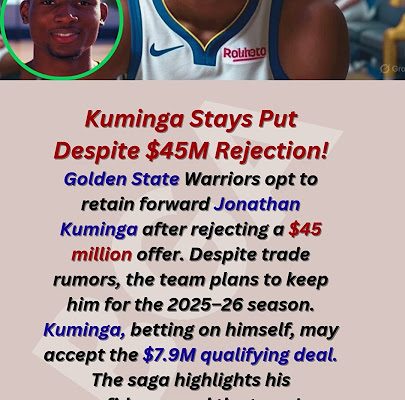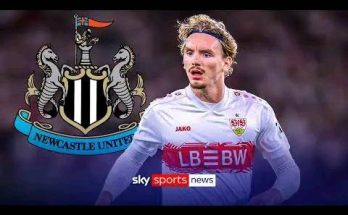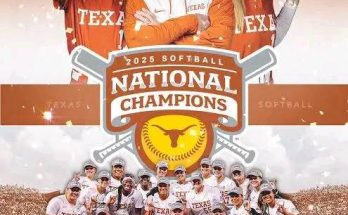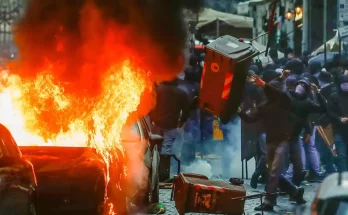Despite the temptation of a lucrative offer and the growing pressure from around the league to make a splash this offseason, the Golden State Warriors have made a firm decision: Jonathan Kuminga isn’t going anywhere. The Warriors reportedly turned down a $45 million trade package from a rival team—one that included a combination of young talent and draft capital—for the promising 21-year-old forward. That rejection sent a message across the NBA: Golden State is not ready to part ways with the rising star, no matter how shiny the return package may be.
Kuminga, entering his fourth year in the league, has shown enough growth and promise to make the Warriors organization believe he is a crucial piece of their future. The former No. 7 overall pick in the 2021 NBA Draft, Kuminga has steadily improved each season. His athleticism, defensive versatility, and explosiveness make him a unique weapon in a league increasingly defined by pace, spacing, and two-way versatility. In a season that saw Golden State fail to make a deep playoff run, Kuminga’s emergence as a reliable scoring threat and a defensive presence offered a rare bright spot. That emergence may have played a significant role in Golden State’s refusal to part with him, even for an enticing trade.
There is also the broader strategic question of the Warriors’ future direction. The days of the original dynasty—Steph Curry, Klay Thompson, and Draymond Green overwhelming the league with their shooting, defense, and unselfish ball movement—are winding down. Thompson already left the team in free agency this offseason to join the Dallas Mavericks. Green remains on the roster but has become more volatile with age, both in temperament and performance. Curry, while still elite, is 37 years old and cannot be expected to carry the load forever. This aging core puts the Warriors in a transition phase, where they must begin shifting their focus to the next generation of talent.
Kuminga represents one of the most important building blocks for that future. He averaged 16.1 points and 4.8 rebounds per game last season while shooting over 52% from the field. These numbers are especially impressive considering he started the season as a bench player and had to earn his minutes in a crowded rotation. His improvement wasn’t just statistical—it was visible in his confidence, decision-making, and control over his athleticism. Earlier in his career, Kuminga would rely on raw power and speed, often resulting in turnovers or ill-advised shots. But last season, he began to showcase a more refined game, attacking closeouts intelligently, making better reads in transition, and even flashing some midrange touch. His defense remained strong, especially against wings and forwards, making him one of the few Warriors capable of switching onto multiple positions without becoming a liability.
The Warriors’ front office, led by General Manager Mike Dunleavy Jr., has been under increasing scrutiny after a disappointing 2024-2025 season and the decision to move on from longtime executive Bob Myers. There’s pressure to both maximize the remainder of Steph Curry’s prime and prepare for a post-Curry era, an almost impossible balance to strike in today’s NBA. The offer for Kuminga—believed to be from a playoff-caliber team eager to add a dynamic forward—was substantial in financial terms, but Golden State seems to believe that his potential far outweighs any short-term gain they could get from a deal. Keeping Kuminga is a vote of confidence not just in his talent, but in the Warriors’ long-term development philosophy.
There’s also a financial element at play here. The NBA’s new collective bargaining agreement has placed harsher penalties on teams that go deep into the luxury tax, a reality the Warriors know all too well. With Klay Thompson gone, the front office faces difficult decisions about how to build around their remaining core without incurring unsustainable costs. Kuminga, still on his rookie-scale contract, represents high value: productive talent at a controlled price. Unless they’re bringing back a certified All-Star, trading a player like that doesn’t make sense from a cap management perspective. The Warriors are also considering extensions and contract negotiations down the line. Kuminga is eligible for a rookie extension, and depending on how those talks go, his price tag could balloon. But by keeping him now, Golden State retains control over that process and avoids overpaying for unknowns in the trade market.
Jonathan Kuminga’s rejection of the trade offer also hints at internal dynamics in the Warriors’ locker room. Last season, there were moments of friction between the younger players and the veterans—especially in terms of roles, minutes, and trust. Kuminga himself publicly expressed frustration at times about his limited minutes and inconsistent role. But rather than creating long-term damage, that tension appears to have led to growth on both sides. Steve Kerr adjusted his rotations midway through the season, allowing Kuminga more opportunities, especially in the starting lineup. Kuminga responded by becoming one of the team’s most reliable scoring threats in the second half of the season. That growth not only boosted his confidence but also likely reshaped how the coaching staff and front office viewed his future with the team.
Curry has also played a quiet but critical role in Kuminga’s development. While the veteran superstar has never been one to dominate locker room politics, Curry’s mentorship of Kuminga, along with Green’s tough-love approach, has helped accelerate the young forward’s maturation process. Both veterans reportedly supported the front office’s decision to keep Kuminga, viewing him as a key component of any hope the team has to compete in the years ahead. Their endorsement matters; Curry in particular still holds enormous sway over organizational decisions, even if he doesn’t always make that power obvious.
Golden State’s rejection of the $45 million offer also speaks to a broader shift in the NBA landscape. In past years, teams were more willing to swap young prospects for proven veterans, especially if they were chasing a championship window. But recent trends—epitomized by teams like the Denver Nuggets and Oklahoma City Thunder—show that developing internal talent and maintaining flexibility may be more sustainable paths to contention. The Warriors seem to be borrowing a page from that playbook, hoping that Kuminga, along with fellow young players like Moses Moody, Brandin Podziemski, and Trayce Jackson-Davis, can form the nucleus of a new era.
That vision remains untested, and it carries risks. Kuminga is talented, but he’s not yet a finished product. His outside shooting still needs improvement; he shot just 31.2% from three-point range last season. His playmaking can also be inconsistent, particularly when forced to make quick reads against aggressive defenses. If Kuminga doesn’t take the next leap, or if injuries or fit issues arise, Golden State could look back on the rejected offer with regret. But the front office is clearly betting that Kuminga’s ceiling is higher than what any team was willing to offer in return—and that’s a gamble they’re willing to live with.
The move also sends a message to the rest of the league about how the Warriors view their place in the NBA hierarchy. They are not in panic mode. While missing the playoffs or flaming out in the Play-In Tournament stings, this is still a franchise that won four championships between 2015 and 2022. They understand that dynasties go through phases, and not every phase includes parades and confetti. By holding onto Kuminga, the Warriors are signaling that they plan to rebuild with intelligence and patience rather than desperation.
In many ways, Kuminga has become a symbol of the franchise’s transitional identity. He represents the bridge between the dynastic past and an uncertain future. If he reaches his full potential, he could be the face of the next great Warriors team—a team that plays fast, defends with length, and doesn’t revolve around a single shooter but instead thrives on versatility. If not, he’ll still likely have a productive NBA career as an elite role player or starter on a competitive team. Either way, Golden State is making a statement: they believe the best version of Kuminga hasn’t arrived yet, and they want to be the team that unlocks it.
Turning down $45 million might sound reckless in an era where even marginal players can command massive contracts, but in the Warriors’ eyes, this wasn’t about money. It was about commitment, belief, and vision. They’re choosing to bet on a player they’ve nurtured from the beginning, someone who knows their system, culture, and expectations. And in a league where loyalty is often sacrificed at the altar of immediate results, that’s a rare and powerful stance to take.



